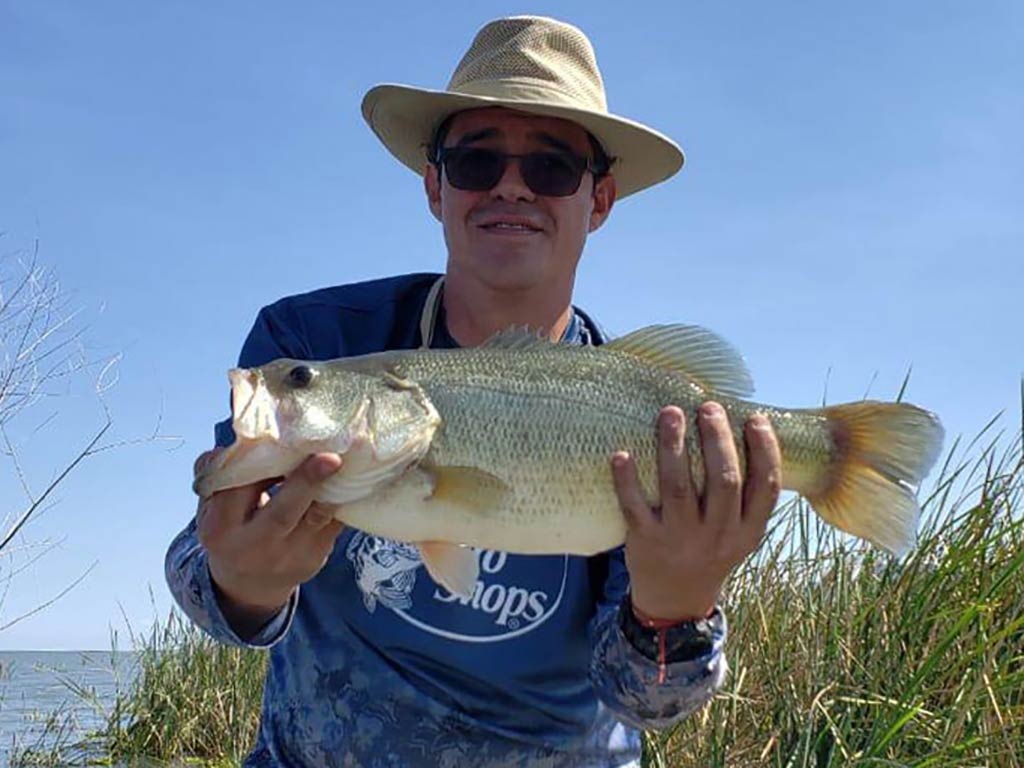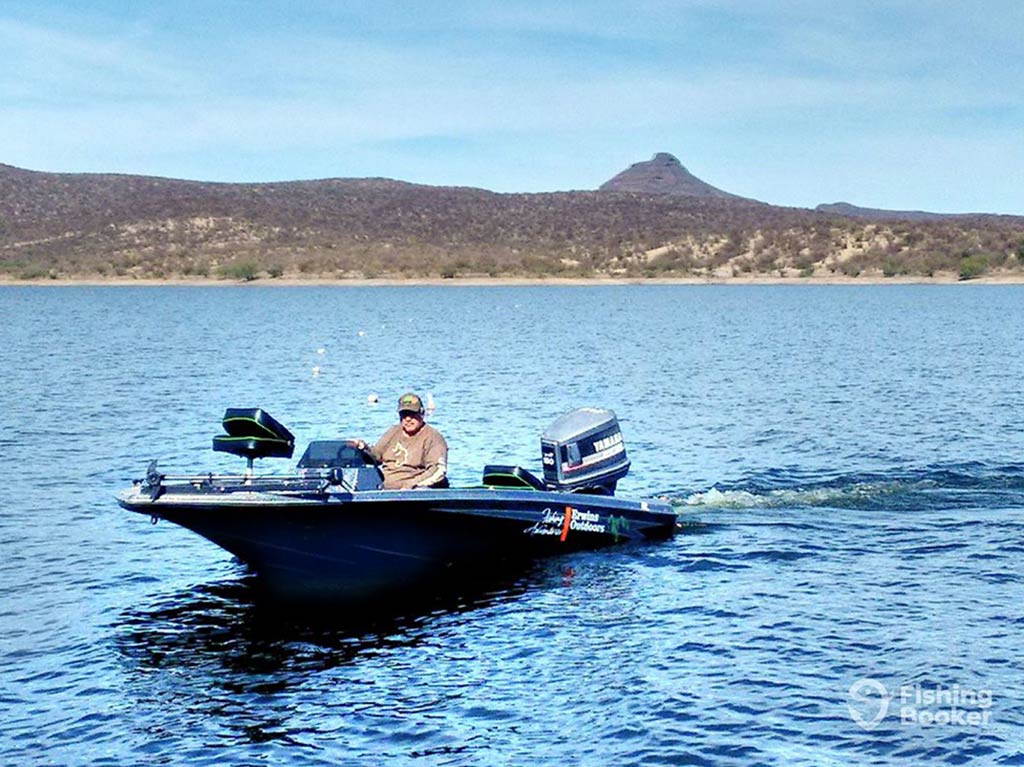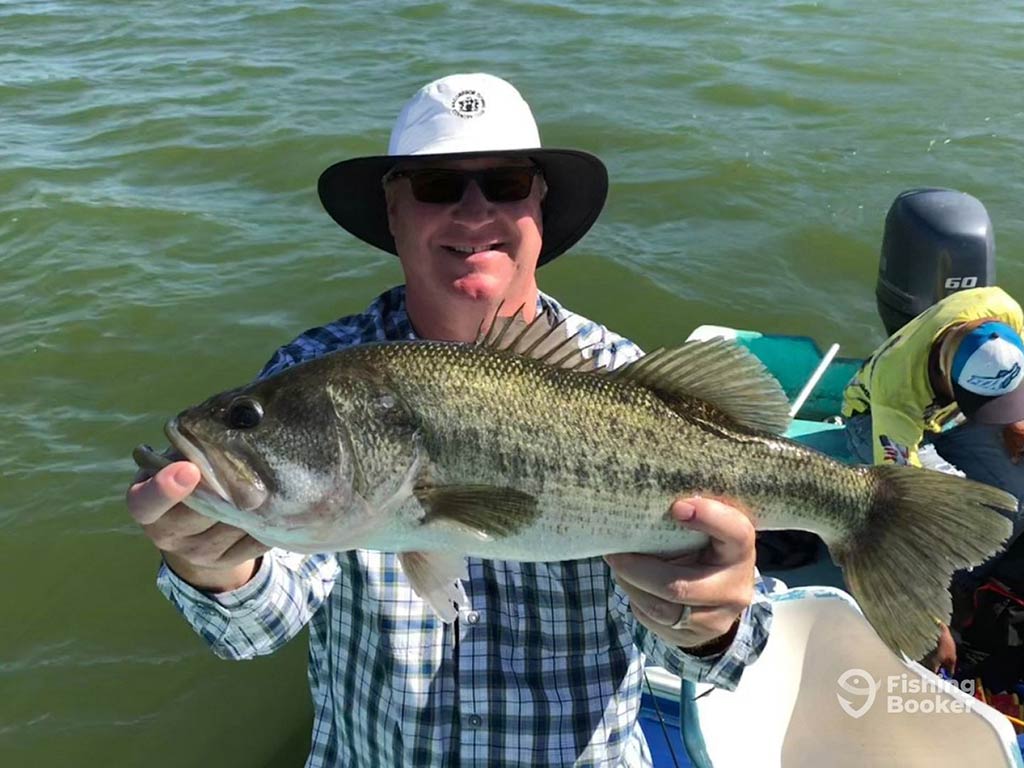Are you interested in Bass fishing in Mexico? If you scan the map, finding large lakes and reservoirs is easy. The potential is present but only a small number of travelers really get to experience Bass fishing in Mexico. It’s a unique journey that you can take by driving or flying into the country. With some planning in place, you can have a great trip to this wonderful country.

In this guide, I’ll introduce you to the ins and outs of Bass fishing in Mexico. I’ll run through species, spots, and more. By the time you’re done reading, you’ll be ready to uncover this top secret. Let’s get started.
Does Mexico have good Bass fishing?
Somehow, Mexico flies under the radar as a Bass fishing destination. The country has a number of fisheries that produce record size Largemouth Bass. Beyond the well-known places, you’ll also find Bass in secret lakes and remote areas.

The challenge in Mexico is finding these places and getting there safely. The country is open to travel but you really need to research safe routes and have a solid gameplan. The few Bass guides in the country are an incredible resource, for starters.
Bass Species in Mexico
You’ll find a few different Bass species in Mexico with some variability between freshwater and saltwater options. For the most part, anglers travel to Mexico to chase Largemouth Bass in the big reservoirs and lakes. But there are more. Let’s take a closer look.

Largemouth. These are the primary quarry for most Mexico Bass anglers. They reach 10+ pounds with the occasional fish hitting 15–20 pounds. Reservoirs near the border, in central Mexico, and even in southern Mexico are prime candidates for Largemouth. The border zone has many fisheries similar to those in Texas but have a fraction of the sportfishing pressure!
Smallmouth. Everyone loves a hard-fighting Smallmouth Bass and Mexico has a few viable fisheries. That said, Smallmouth are far less common and less pursued than Largemouth. The fisheries are generally private and you’ll need to pay a fee or stay on the property. For the most part, you’ll find better Smallmouth fishing in the United States and Canada.
White Sea Bass. Mexico has a large segment of Pacific Ocean coastline that happens to be rich with saltwater Bass species. The White Sea Bass offers exceptional flesh and is also a blast to catch on gear and fly.
Barred Sand Bass. Also common in Mexico, you’ll largely find these in the waters of Baja. Barred Sand Bass are categorized as a Grouper and are bottom-dwelling species found around reefs and rocky outcroppings. They’re great for eating and are fun to catch. Hold on tight because they strike fast and immediately dive for cover!
Giant Sea Bass. You might hear these called “Black Bass” and they’re easy to identify as the species reaches very large sizes. Another name is “Gigas” as the scientific name is Stereolepis Gigas. They like kelp beds and live in the north Pacific with populations extending into Mexico. Giant Sea Bass are unique because they can reach sizes over 300 pounds and are larger than most humans.
Getting There is Half the Battle
Many of Mexico’s Bass fisheries are not adjacent to popular tourism areas. This is especially true for the Largemouth Bass fisheries. In Baja, the saltwater Bass species are more accessible with airports in San Jose del Cabo, La Paz, and Loreto. For the interior lakes, you might use regional airports in Guadalajara and other populated locales.

After arriving at the airport, you’ll need to rent a car or hitch a ride. Using guides and lodges is always a good idea because they will arrange for local transportation. Otherwise, you can find rentals and hotels near lakes and even boat rentals in some areas.
Driving to Mexico is a good option as well. Taking toll highways is simple and safe. You can also bring your own boat down when driving. For anglers wanting to stay longer and explore multiple lakes, a Mexico road trip might be in order. Just make sure you have the proper paperwork for your vehicle and boat, along with Mexican insurance to cover everything.
Bass Fishing the Border Zone
The most convenient fisheries for US and Canada residents are near the border. Some even straddle the border and you can fish waters that span both countries. Amistad Reservoir is one of those amazing places that have excellent Largemouth Bass fishing. You’ll also find Striped Bass in these waters, which isn’t common anywhere else in Mexico.

Take a boat up the Devil’s River Bay and there are Smallmouth Bass as well. Anglers can access the lake from Texas and stay on the US side. Alternatively, cross the border at the Lake Amistad Dam and you can launch on the Mexico side.
The other big fishery spanning the border is Falcon Reservoir. Like Amistad, it’s a reservoir on the Rio Grande River. It’s a Largemouth Bass fishery with some of the biggest fish in Texas. You can also access the reservoir from Texas or drive over Falcon Dam to cross the border and launch in Mexico.
Finding Sea Bass in Baja and Beyond
For ocean-based Bass fishing, Baja is your best bet. You can catch Bass farther south as well but the Baja Peninsula has a unique habitat that ocean-faring Bass enjoy. The backwaters of Magdalena Bay are especially productive as they have mangrove structures and plenty of forage.
You can find Bass from shore in Baja but having a boat or kayak increases opportunities. Look to the estuary ecosystems along the Pacific Coast and to the Sea of Cortez for Grouper. Although Bass are fun, there are tons of other species to enjoy in these places as well. Dorado, Roosterfish, Yellowtail, Sailfish, and plenty more are common.
Interior Fisheries with Trophy Largemouth Bass
The highlights of Mexico Bass fishing are the interior reservoirs and lakes where Largemouth Bass are the primary targets. Some of these places have insanely large Bass and the numbers of fish are also excellent. Anglers travel from around the world to chase record Largemouth Bass at a few of these locations. This is just the tip of the iceberg as well!
Lake Aguamilpa
Likely the best known Largemouth fishery in Mexico is Lake Aguamilpa. The reputation is very legitimate with a ton of fish exceeding 5 pounds and record fish over 10 pounds. It’s a very long reservoir just east of Tepic. Flights to Guadalajara or Puerto Vallarta are ideal and the lake is a day drive from either airport.
If you want numbers with the shot at some really big Largemouth, this is the place to go in Mexico. It has some great guides and fishing camps as well. The culture, food and general landscape here will not disappoint either.
El Cristo Roto

While many of the great fisheries are located in West-Central Mexico, there are plenty of others deep in the mainland. El Cristo Roto is near Aguascalientes in the central highlands. The region is worth visiting just to see the mountains and natural wonders. It’s a place filled with beautiful towns and some of the most exciting destinations in Mexico.
The reservoir has several small towns on the banks with San Jose de Gracia being a great place to basecamp and rent a place. Several lodges and guide services also serve the lake from town.
Lake Zimapan
Similar to El Cristo Roto, this lake sits a little deeper in the central mountainous country. Santiago de Queretaro is just to the west and is a great place to stay if you don’t book lodging directly on the lake. The biggest Largemouth Bass can top 10 pounds here but most are smaller. If you want numbers, it’s not uncommon to catch 50+ fish daily – some days reach 100+!
If you visit this region, take advantage of the fishing but also take a few city and nature tours. The colonial architecture, mountain hikes, and local museums will add to the pleasure of fishing here.
Lake Baccarac
The region around Los Mochis and Mazatlan is a hot spot for Largemouth Bass. Reservoirs with scenic forested shores have perfect habitat and large fish. Lake Baccarac is a favorite spot and the record Largemouth is over 19 pounds! It’s a huge lake with extensive coves to explore. Several lodges make the lake accessible for visitors by supplying guides, boats and handling logistics.
El Salto Lake
A little over an hour from Mazatlan lies a lake where some incredible Largemouth Bass have been caught. The lake has produced fish over 15 pounds and it has a ton of structure to hold potential records. Easy access from Highway 1 is nice for drivers wanting to reach this destination. It also has some great lodging and guides who know the lake very well.
If you want to reach multiple lakes in this region, consider a road trip from Mazatlan to Los Mochis. Many of the most productive Largemouth Bass fisheries in the country are located along this corridor.
Bonus: Chiapas

The latter fisheries are accessible and have some of the best Largemouth Bass fishing in the world. If you’re interested in something more exploratory, consider the Chiapas region in southern Mexico. It’s water-rich and I have actually found Bass sitting on remote springs along the Guatemala border.
In terms of travel, the country roads in this region have occasional issues with dangers, so this is not for the faint of heart. The large reservoirs and numerous lakes are so enticing that it warrants the risk, I think. Come with a sense of adventure but exercise caution. Always ask locals about road safety before traveling in the more remote parts of this area.
How to Jumpstart Your Mexican Bass Fishing Adventure
Planning the trip is your first step to getting off the ground. The most efficient way to plan is through a guide service or lodge. They have the experience and intel needed to plan your trip and reach your destination. While road-tripping is fun, it’s much easier to fly and have a guide service meet you at the airport.

For those with cold feet, start by fishing the border reservoirs and make a few day trips over to the Mexican side. These are generally rural areas and they’re fun to visit and fish. You’ll also get a feel for the paperwork and process of border crossings.
After getting a feel for the country, jumping into a bigger Baja or mainland road trip makes it possible to hit multiple destinations while having control over your itinerary. Driving in Mexico isn’t for everyone, however, and flying into a destination remains the easier way to quickly reach a world-class Bass fishery. Tight lines!
Have you ever been Bass fishing in Mexico? How did you go about planning it? We’d love to hear from you in the comments below!
The post How to Go Bass Fishing in Mexico: An Angler’s Guide appeared first on FishingBooker Blog.
https://ift.tt/EmWRKsj
0 Comments
Enregistrer un commentaire